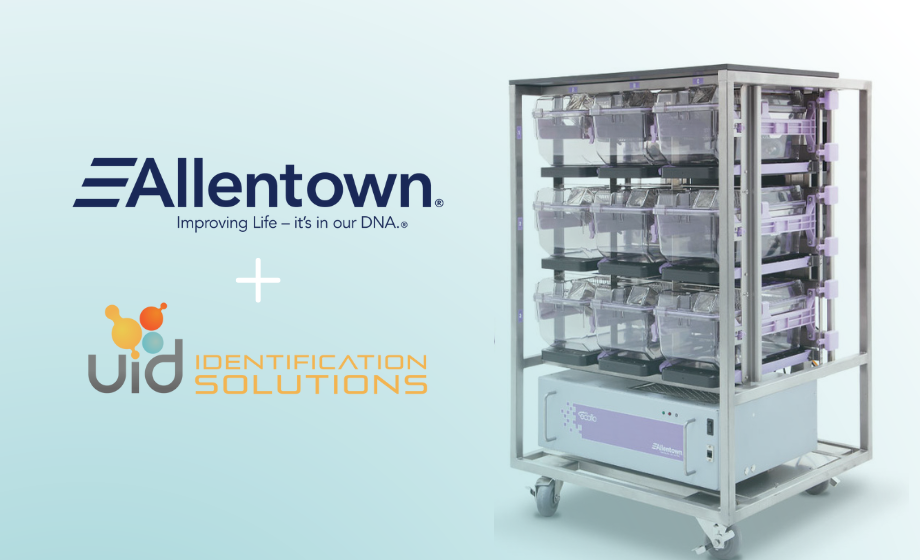Discussing Industry Trends in Home Cage Monitoring with UiD
Interview by Hayleigh Culliton
As part of an initiative with the inaugural American Physiological Society Summit, we had the pleasure of sitting down with some familiar faces to discuss innovations, discoveries, and future directions. In this interview, I spoke with Jose Gadea, VP of Sales and Marketing for Unified Information Devices. When asked about his time at the Summit, Jose said:
“The American Physiological Society creating a more intimate environment allows for us exhibitors to have more in-depth and meaningful discussions with scientists. At larger events, it can be challenging to have these types of conversations. Therefore, I am excited about the opportunity to connect with attendees and have more engaging discussions.”
Introduce yourself and describe UiD to someone who doesn’t know you.
My name is Jose Gadea and I am the Vice President of Sales and Marketing for Unified Information Devices (UID). At UID, we specialize in providing cutting-edge radio-frequency identification (RFID) solutions for researchers who are seeking faster, more accurate and consistent data collection. Our products are designed to automate processes and simplify animal and laboratory asset identification and tracking. As the Vice President of Sales and Marketing, my role is to ensure that researchers are aware of the value that UID can bring to their work. Our product range includes RFID microchips and readers for animal identification and temperature monitoring, but “we are not just a microchip company”, we offer much more than that. Our team of software engineers work diligently to develop software programs that automate data collection and streamline routine processes, making the research process more efficient than ever before. At UID, we are committed to providing our customers with the best possible tools to help them achieve their research goals.
How does UID approach innovation and staying ahead of market trends?
I’m a former scientist. We have other scientists at UID, including biologists and computer science experts, and together we intend to bridge the gap between laboratory animal science and information technology by developing identification solutions to serve the needs of researchers across multiple scientific disciplines. We also stay in touch with developing science, with technology innovations and mainly with the researcher. We look at the needs of the research and based on our background we can help identify potential products that will solve problems or automate processes. So that’s how we stay ahead of the market, by using our knowledge and experience.
That’s how we developed the Control Substance Inventory System, which utilizes RFID technology to enhance security and streamline inventory management of controlled substances. We recognized a significant need for this type of technology in laboratory research and veterinary applications, and developed a solution that is gaining significant adoption across the industry. And along those lines, that’s how we developed the UID Mouse Matrix, a unique system that enables researchers to monitor animals in their home cage without disrupting their natural behavior. This system has revolutionized the way researchers conduct animal studies, by providing a non-invasive and stress-free method of data collection.
Another exciting project we are currently working on is an application for tumor measurements. Our goal is to automate the entire process of identifying the animal, taking temperature and weight measurements, and measuring tumors. By streamlining this process, we can significantly improve efficiency and accuracy, while also reducing the potential for errors. Our approach begins with the use of a microchip to provide a digital ID for each animal. This allows us to automatically tie all data to the correct animal, eliminating the need for manual entry and minimizing the risk of errors. Our tumor measurement application then enables researchers to capture all necessary data quickly and easily. In fact, we can measure and record all data for one mouse in just 30 seconds. We are so excited about this project that we are offering the application free of charge to researchers who can benefit from a higher throughput model. All that is required is the microchip and reader from UID.
Do you have any key collaborations?
Absolutely! Our mouse matrix system is a great example of our collaborative approach to innovation. We partnered with Allentown, a leading manufacturer of rodent housing systems, to integrate our home cage monitoring technology with their individually ventilated cage rack systems. We’re very excited about our collaboration with Allentown, who are developing cage rack systems that incorporate home cage monitoring and smart technology into their racks at various scales. They have a range of rack systems that can accommodate different needs, from 48-72 cages for large-scale facilities and studies, to a 9-rack system for smaller-scale studies. We’re committed to making our system accessible to researchers with different budgets and requirements. It’s thrilling to see how our collaborations are expanding the reach of the system and making it available to more researchers.
UiD has partnered with one of the leading manufacturers of rodent housing systems to integrate the Mouse Matrix into their homecage rack systems. From 9-cage to 72-cage systems, this collaboration is committed to making research tools accessible for all budgets. Learn more about the collaboration with Allentown here.
Tell me about the Mouse Matrix: key features, application areas and how it works.
The Mouse Matrix is an RFID reader board that is placed under an animal’s home cage. Each animal is implanted with a small transponder, and this allows us to monitor the activity and the temperature of each animal in the cage. A key feature of the system is that it allows monitoring of group-housed animals in the home cage. The Mouse Matrix fills a big void because many of the systems on the market can only monitor single house animals; our system is able to monitor up to five mice in a cage at the same time. The other big advantage is that it allows 24/7 continuous monitoring. Which means researchers are able to monitor the animals at night, when they are not in the lab and animals are the most active. The Mouse Matrix enables researchers to peek into the cage at times where we are normally not in the lab. So we can see what behavioral responses or anything that the animal is doing.
This would have a big tie into animal welfare too, right? Reduced animal handling…
Exactly, by enabling animal temperature monitoring in this way, it means that we can monitor health status in completely undisturbed animals. Therefore, we are not handing the animals and we are not disturbing their normal behavior. The Mouse Matrix could identify when an animal’s temperature drops because it’s too sick and deserves attention, so we can identify that, and send an alert to a lab technician to look into what’s going on in that particular case. So definitely improved animal welfare is a big advantage for this system.
Using RFID technology, this innovative system enables researchers to remotely and continuously track digital biomarkers, including temperature and locomotor activity, for one or several mice in their natural environment. To request more information about the UID Mouse Matrix, click here.
What research questions or challenges does the Mouse Matrix address or solve?
The biggest challenge we face is monitoring group-housed animals without disturbing them. It’s always been a tricky task, especially considering that rodents are the most commonly used research species, and they’re social creatures that spend most of their time in their cages, usually being more active at night. It’s crucial for researchers to monitor them in an undisturbed environment. Also, the majority of behavioral testing is performed on single-housed animals, outside of their home cage, and for short periods of time. To give you an idea, the researcher must go into the animal facility, take the cages (or the animals themselves) out of their natural environment where they spend most of their time, and then conduct a brief study. This causes a lot of stress for the animals. Our goal is to eliminate the stress by integrating the monitoring system into the rack and the home cage. This way, researchers can track the animals completely remotely, without any human contact or disruption to their natural environment.
Are there any unique or novel applications for the Mouse Matrix?
As the Mouse Matrix system gains broader adoption, we are constantly discovering new and unique applications that our clients are using the system for. One such application that stands out is scientists studying thermogenesis and the role of brown adipose tissue in diabetes and obesity. By inserting two probes in a mouse, researchers can track temperature at two separate locations – one in the back under the brown fat pad to measure the temperature of brown fat, and one in the inguinal area to measure the temperature of white fat. Each probe has a unique ID, so we know exactly where each temperature reading is coming from. This is just one example of the exciting and innovative ways researchers are utilizing our technology.
Is there anything that particularly excites you about the industry or the future?
Yeah, it’s really exciting to be a part of the cutting-edge field of home cage monitoring. This is a rapidly developing area, and there’s a lot of interest in it from the research community. What’s even more exciting is that we are at the forefront of this technology, monitoring animals undisturbed and even remotely in some cases. With our Mouse Matrix system, we are enabling researchers to answer experimental questions that were once thought to be impossible. It’s incredible to see how our technology is advancing the field and pushing the boundaries of scientific research.
Learn more about UiD
Unified Information Devices (UID) is a leading provider of radio-frequency identification (RFID) solutions that empower researchers to generate higher quality data faster, accurately and consistently. UID Identification Solutions combines advanced RFID technology with novel software to facilitate the identification and tracking of research animals and other laboratory items. Our innovative range of products help automate data collection, streamline processes and improve workflow efficiency.
About the Author

Hayleigh Culliton is an accomplished scientific marketer with a background in Biology and Nursing. She obtained her Bachelor’s degree from Trent University, where she developed a strong passion for science communication. With 6 years of experience in scientific marketing, she has helped companies in the life sciences industry develop and execute effective marketing strategies and #ShareScience.




